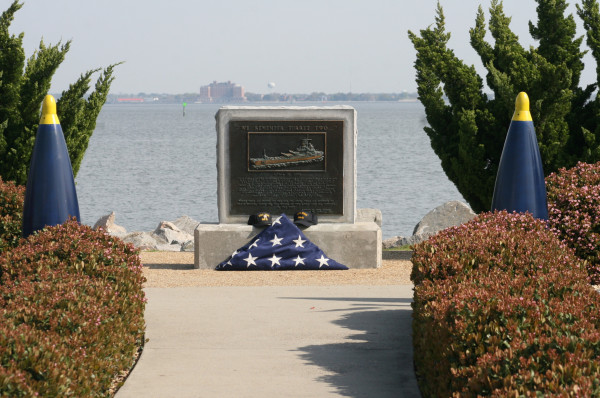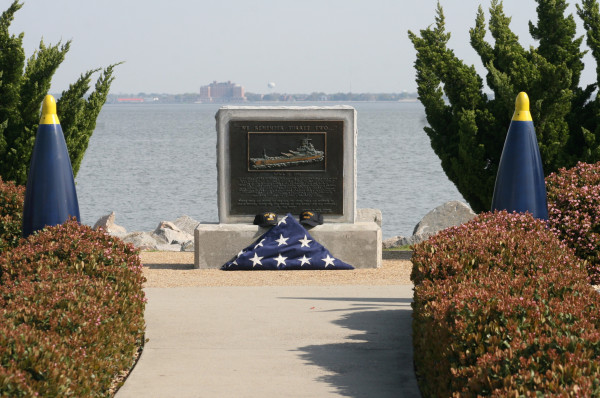“What do you mean, you fixed it?” I asked.
His reply floored me. “I centered the flag.”
I looked at the photograph again, feeling as if I were playing an odd version of Where’s Waldo. Then I saw it. And my blood pressure rose.
Saving an old Warship
A few years ago, I volunteered for a group with a goal to save the USS IOWA Battleship (BB-61) from the scrapyard. At the time, “The Big Stick” was a member of the Mothball Fleet in Suisun Bay. Our hope was to bring the vessel to the Port of Los Angeles and open it as a museum. During my time there, I had the honor of meeting three generations of crew members who served on her during WWII (’43-’49), the Korean War (’51-’58), and The Cold War (’84-’90).
One of my tasks was to create a fundraising brochure. I was handed a stack of technical documents packed with drawings, specifications and amazing facts as a starting point. For example, the ship’s 16-inch guns could lob nine, 2,700 pound shells up to 24 miles accurately–every 30 seconds! Therefore, the team that mostly consisted of battleship buffs wanted the ship’s engineering to be the hero of the story. However, I had a different idea. Since the brochure’s objective was to elicit donations, it needed to connect with donors on an emotional level. So, I suggested that we tell the story from the sailors’ perspectives.
With the heroes selected for our story, I now studied their throughlines. Each generation had different motivations:
- The WWII vets felt the pressure of time. At almost 90 years old, one vet said, “I sure hope I walk on her before my tour of duty on this earth is over.”
- Most Korean War vets, now in their 70s, wanted to reacquaint themselves with the lady who had such an impact on their lives. One vet told me, “I went aboard as a boy and left as a man.”
- But the Cold War vets had the most heartbreaking story of all. This group wanted to save the ship as a memorial to their 47 brothers who were killed in a turret explosion on April 19, 1989.
While working on the Cold War part of the story, I selected the following photo from a service that commemorated the 20th anniversary of the tragedy.

Figure 1: The original
I loved the photo. My boss, however, thought that it needed to be fixed. So, he photoshopped it.
Here’s the image that he sent.
Can you see the differences? Want some help? Click on Figure 2 above to see an animated GIF of the “improvements.”
As you can see from the animation, he not only centered the flag, but he removed the “unsightly” navigational post in the background.
I felt sick. The original photo documents a group of heroes mourning the loss of 47 brothers. It’s real. It’s imperfect. And as a result, the story is perfect. But evidently, when seen through the lens of absolute perfection, those flaws are just too glaring, and must be eliminated.
Stories represent life. And life is messy. We relate with people who are imperfect because they’re just like us. It’s our imperfections that make us human.
So, the next time you find a flag in your perfect story, resist the urge to fix it. Embrace it instead.
Footnote: The USS IOWA is now a museum located in the Port of Los Angeles. Go visit her!
